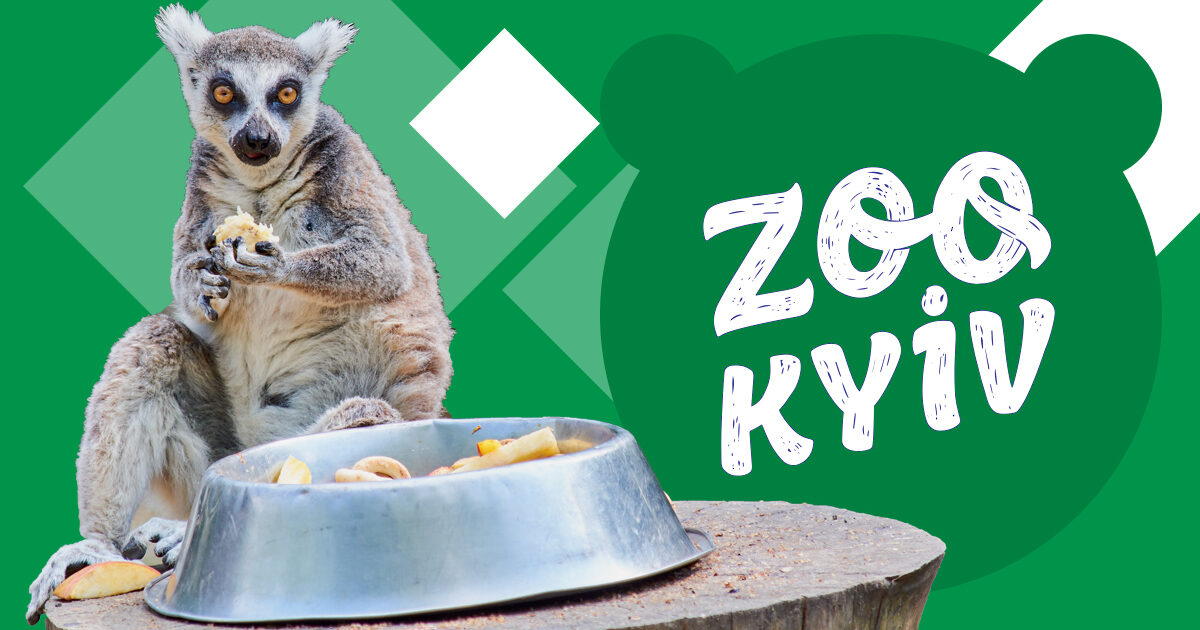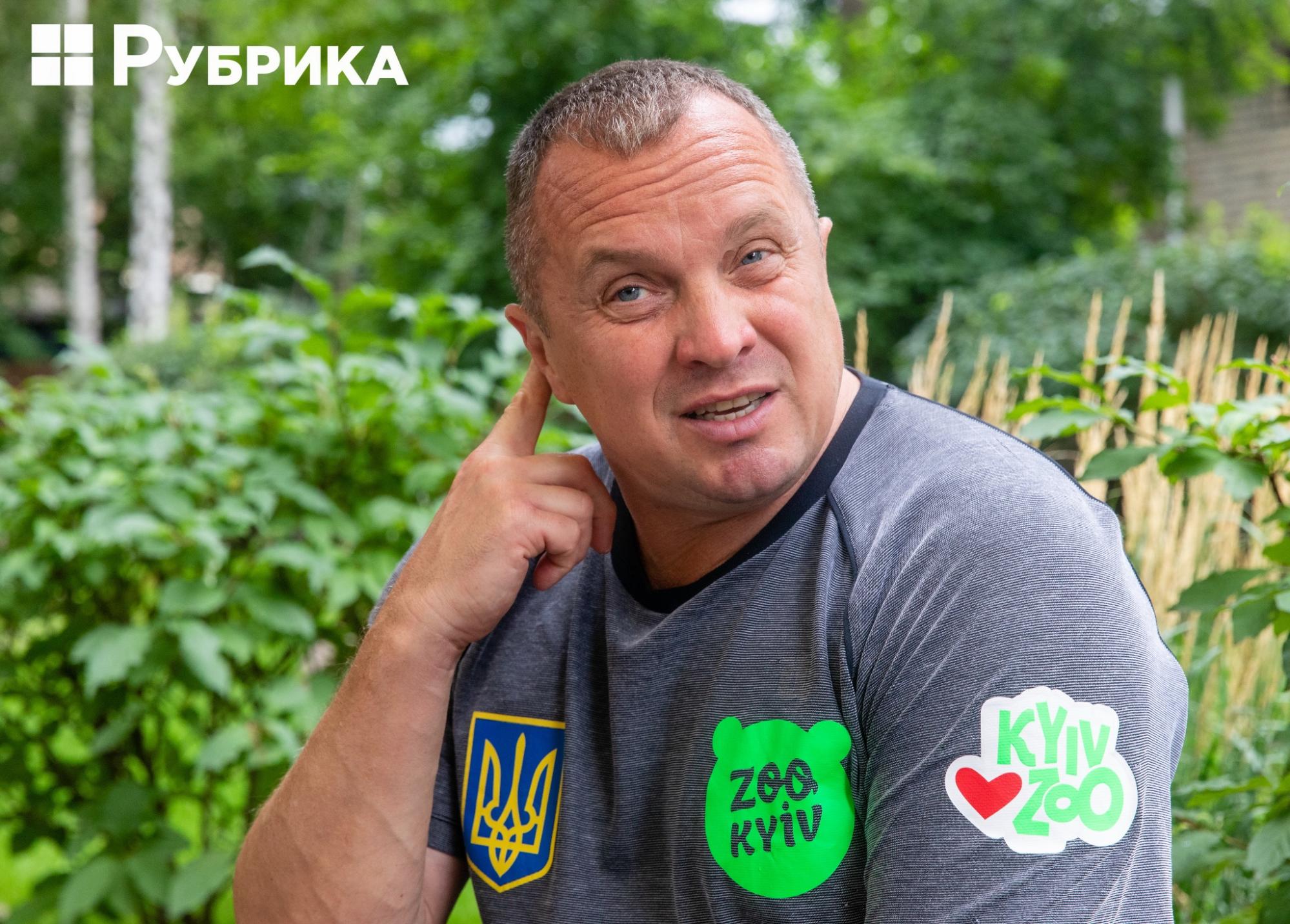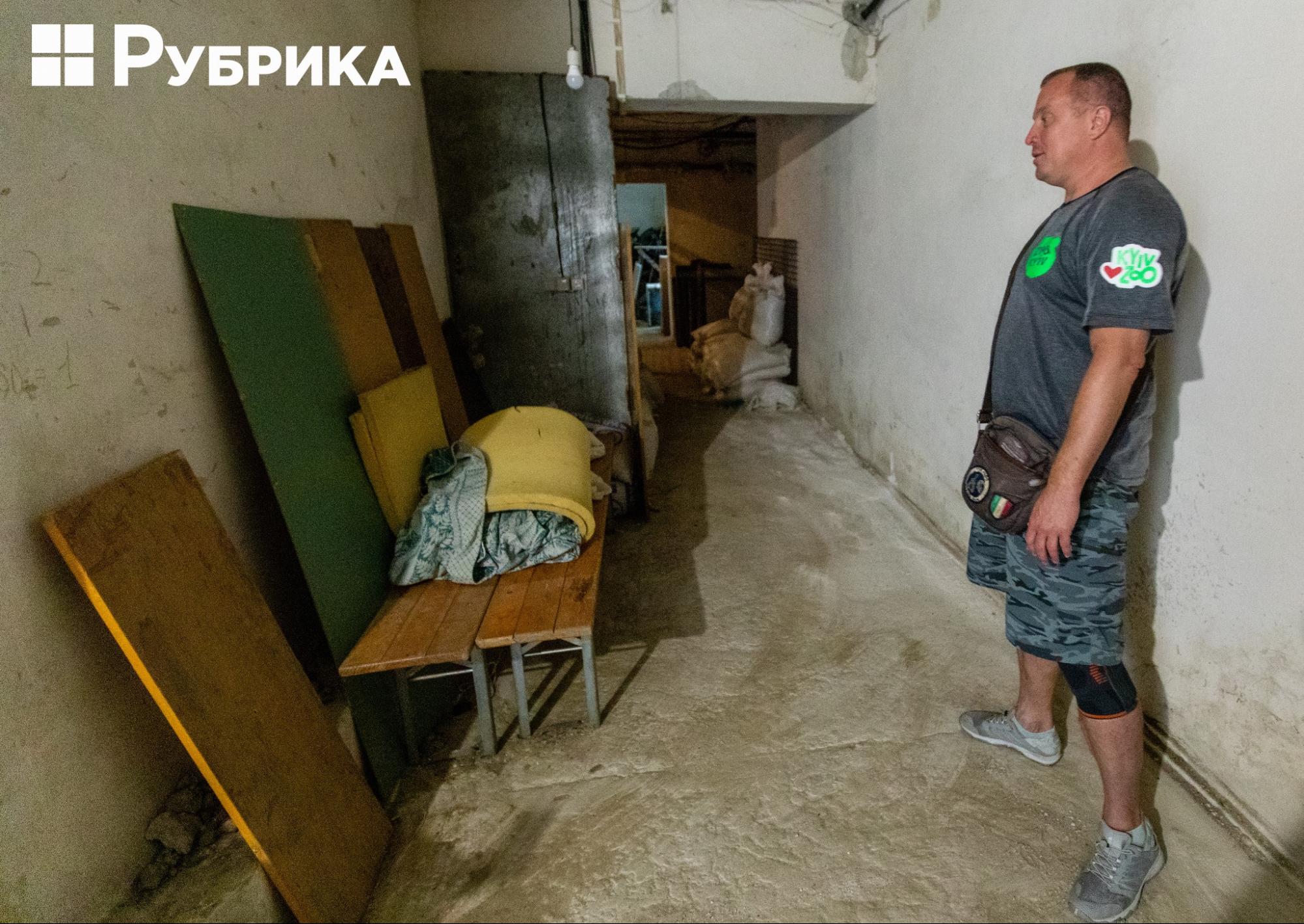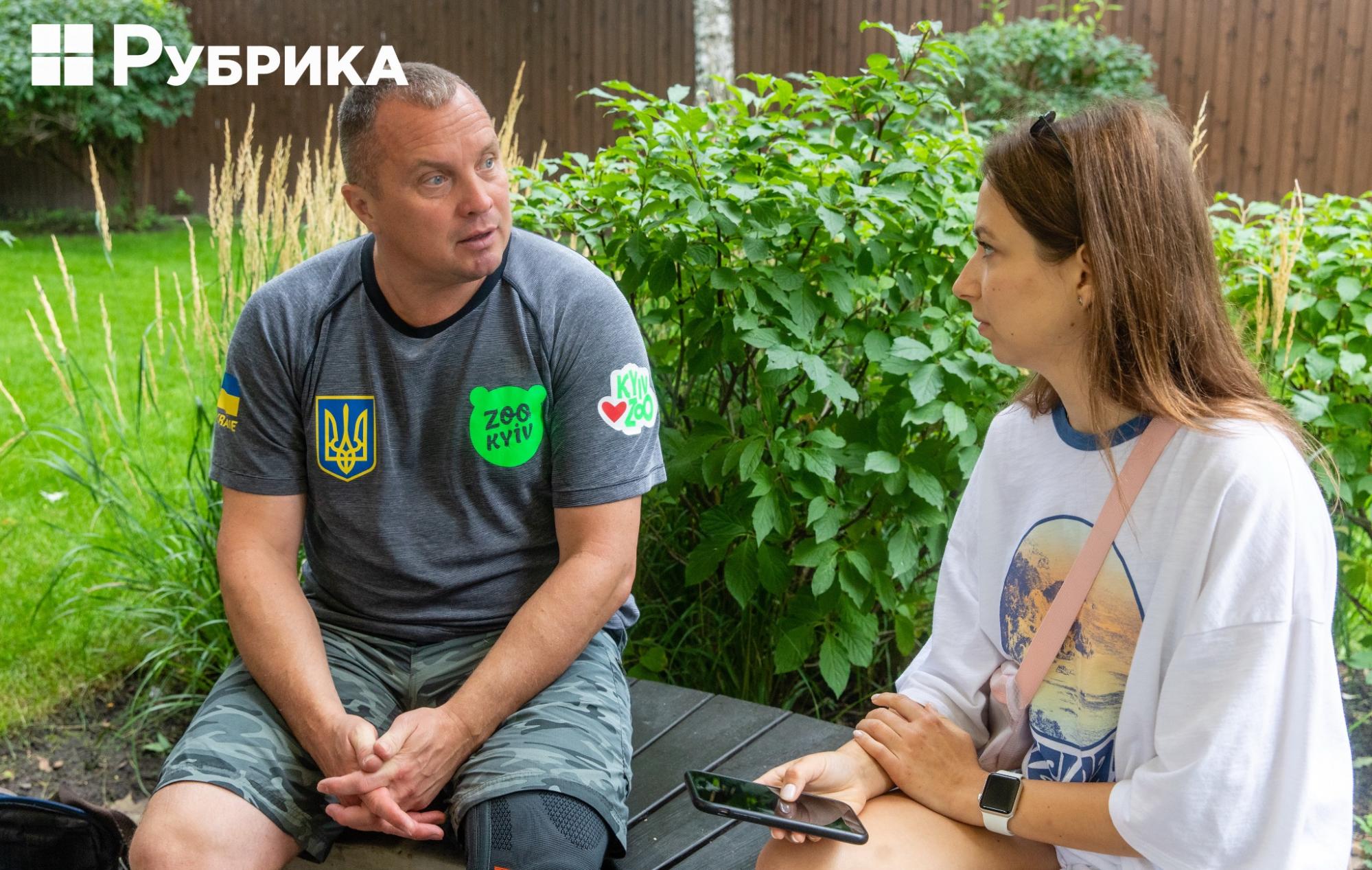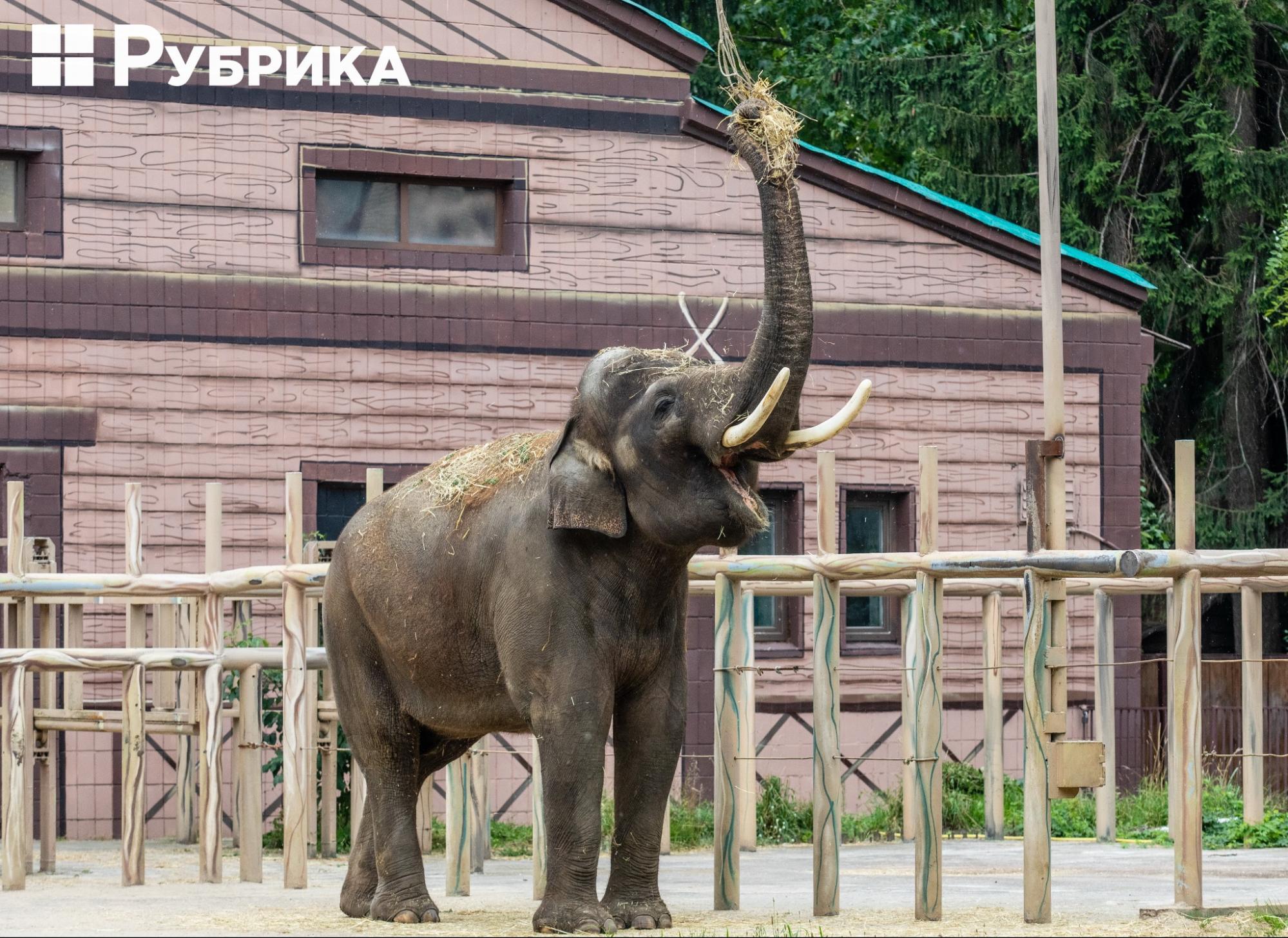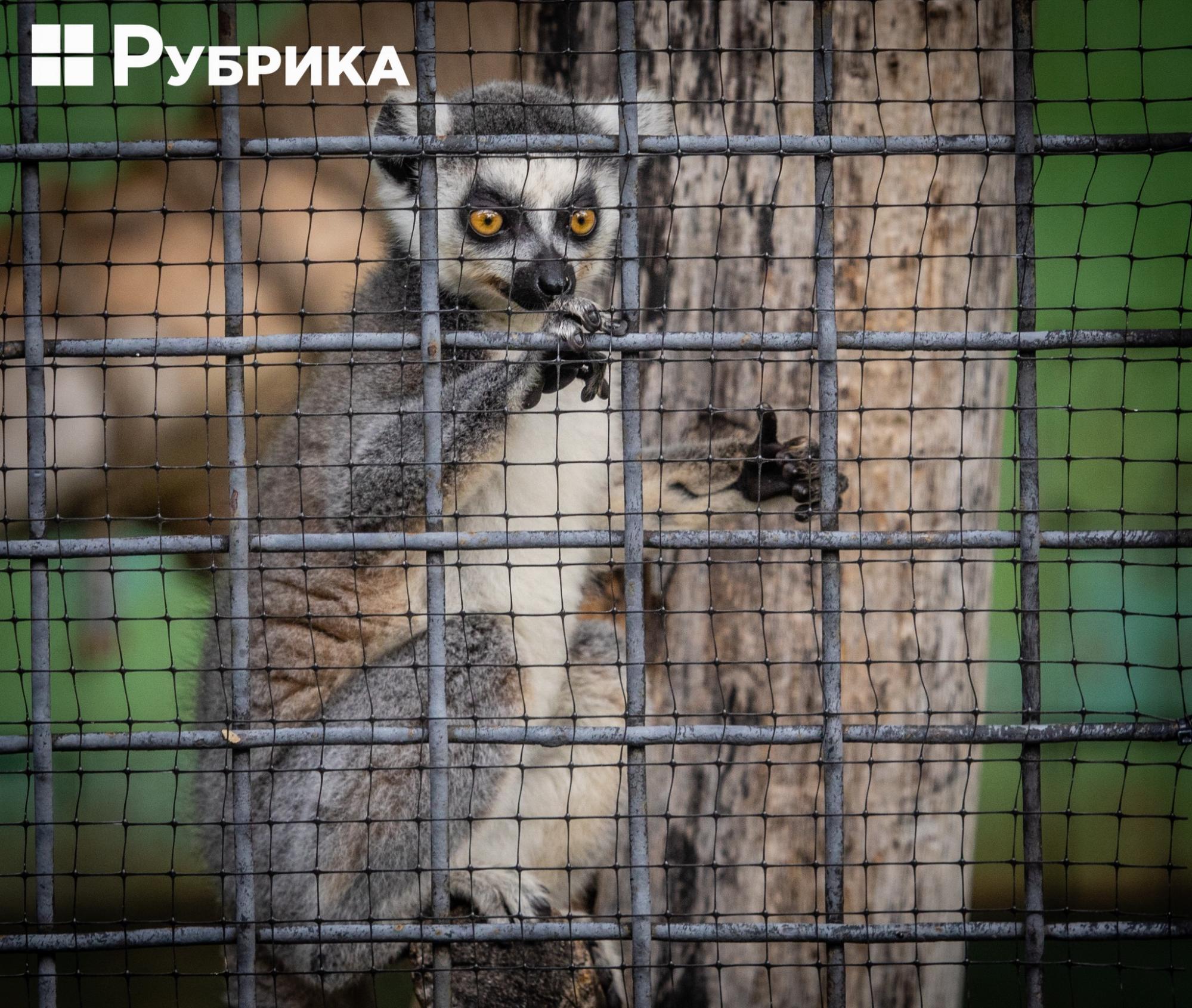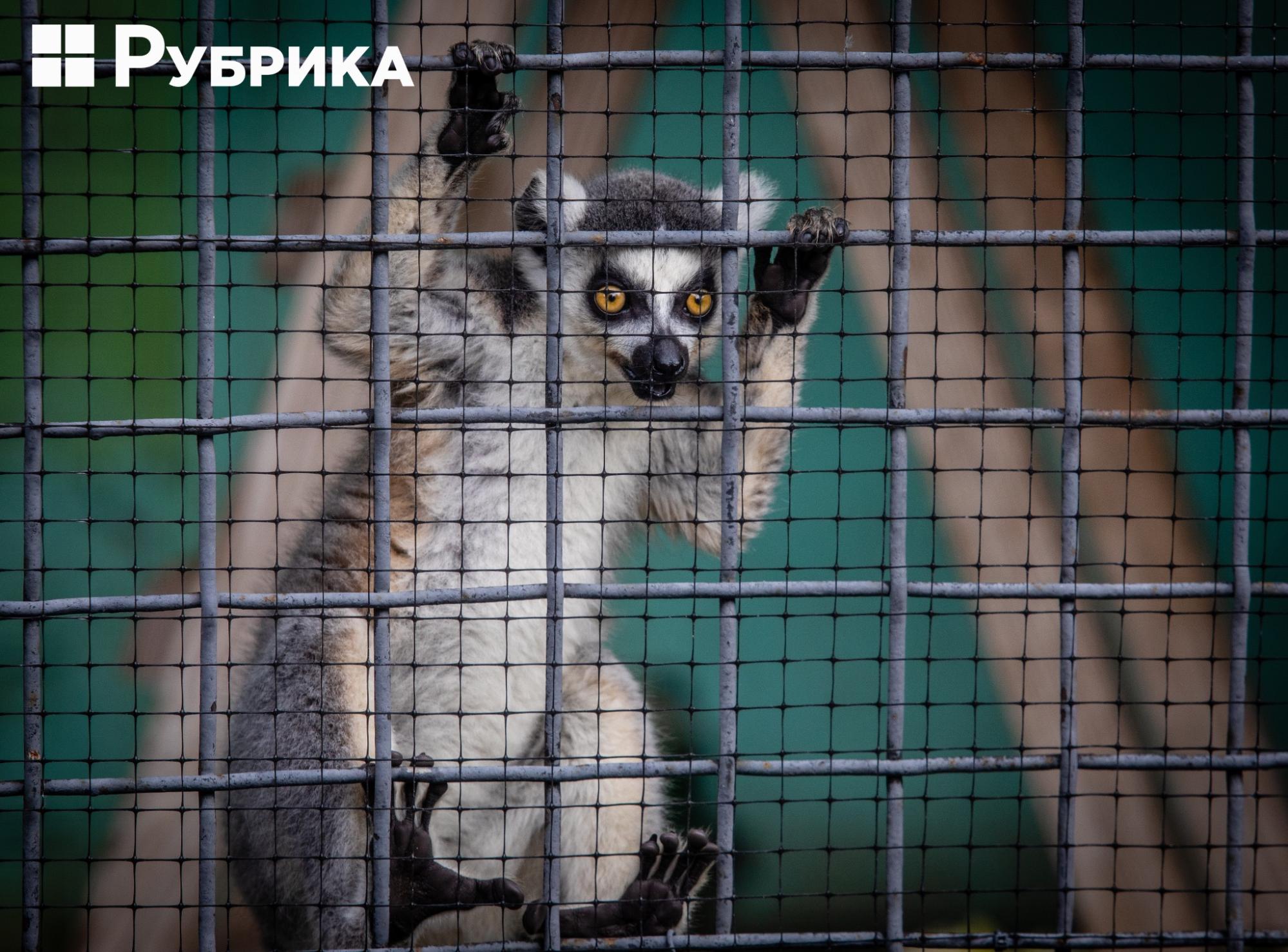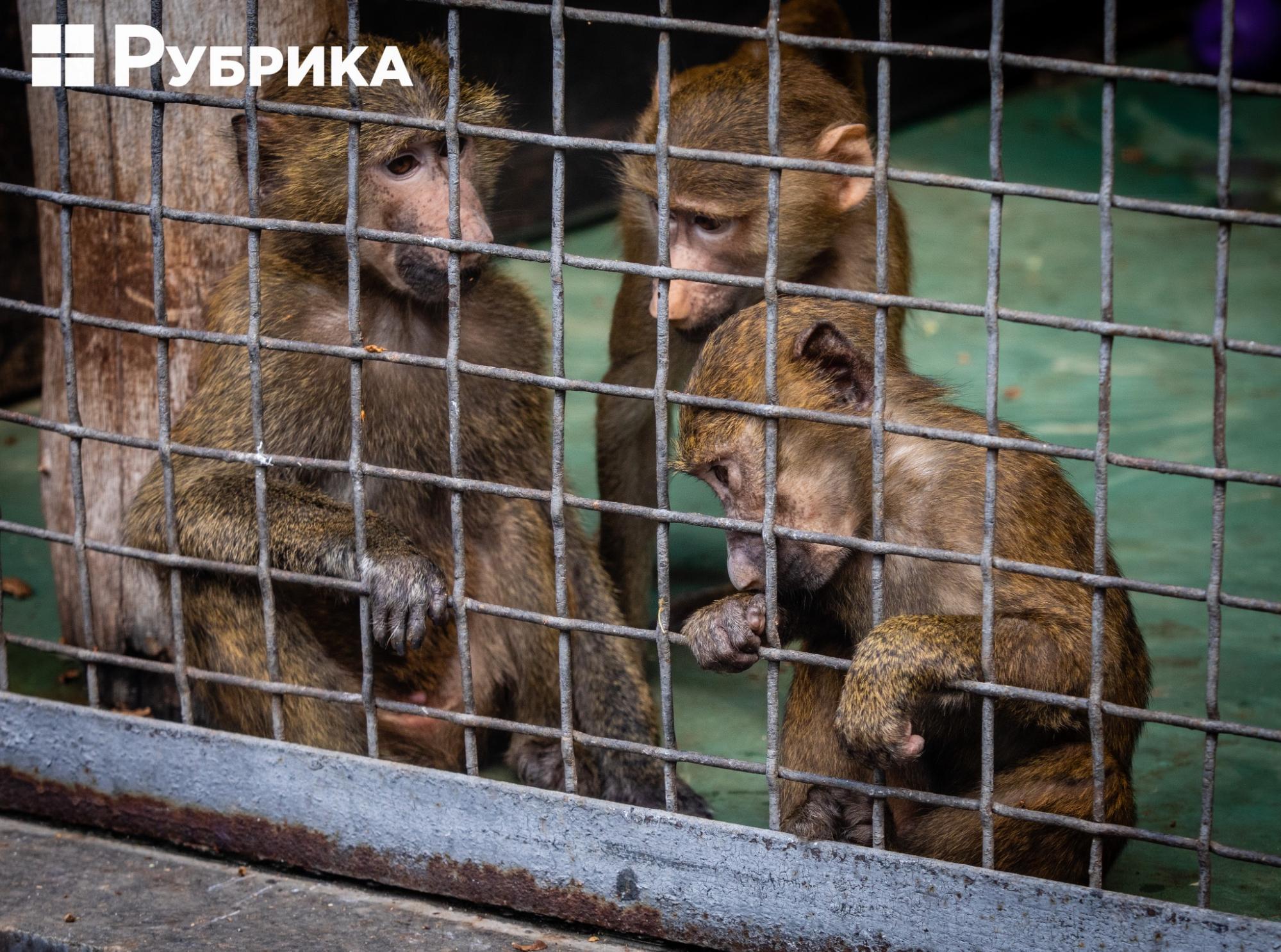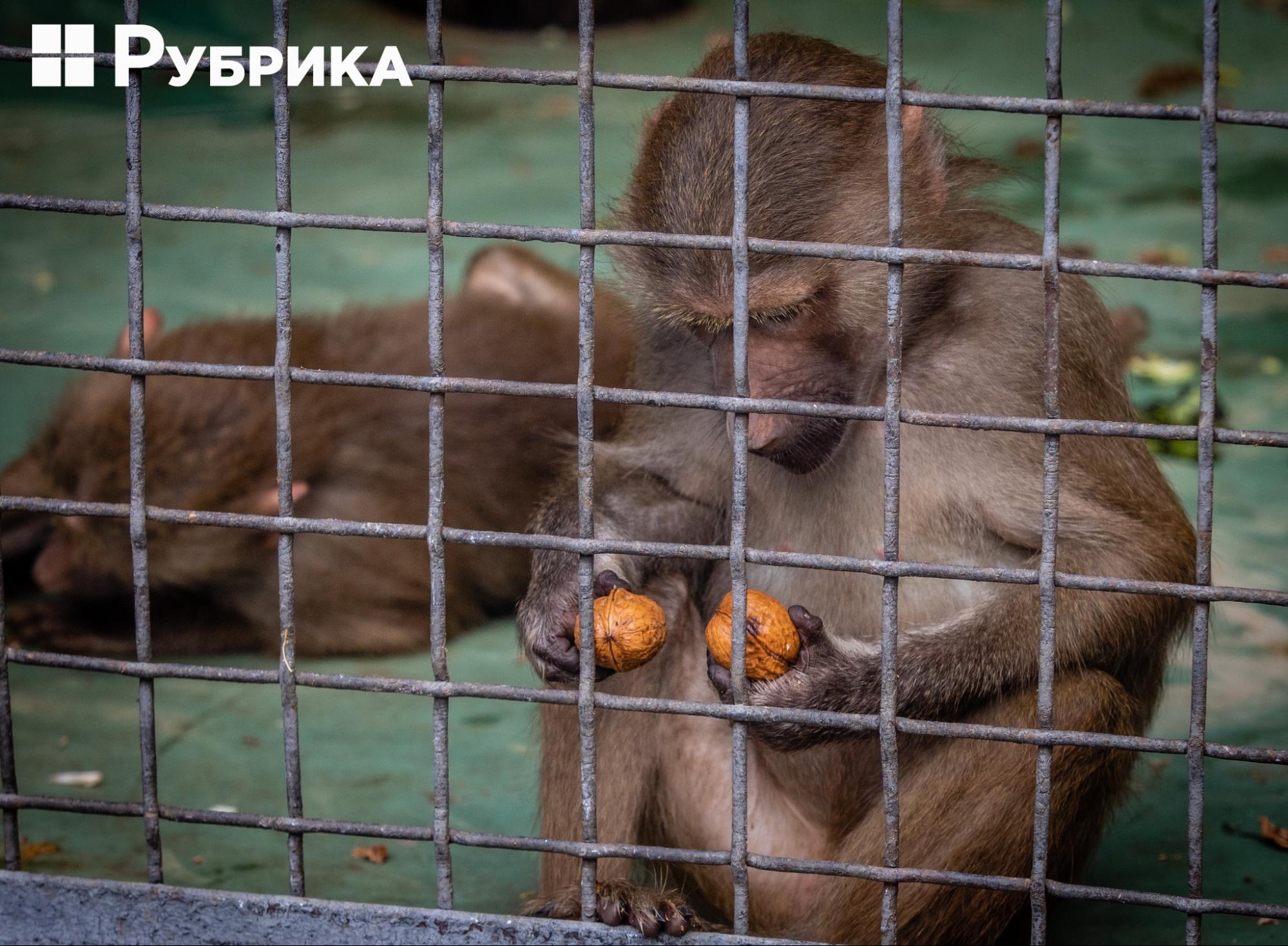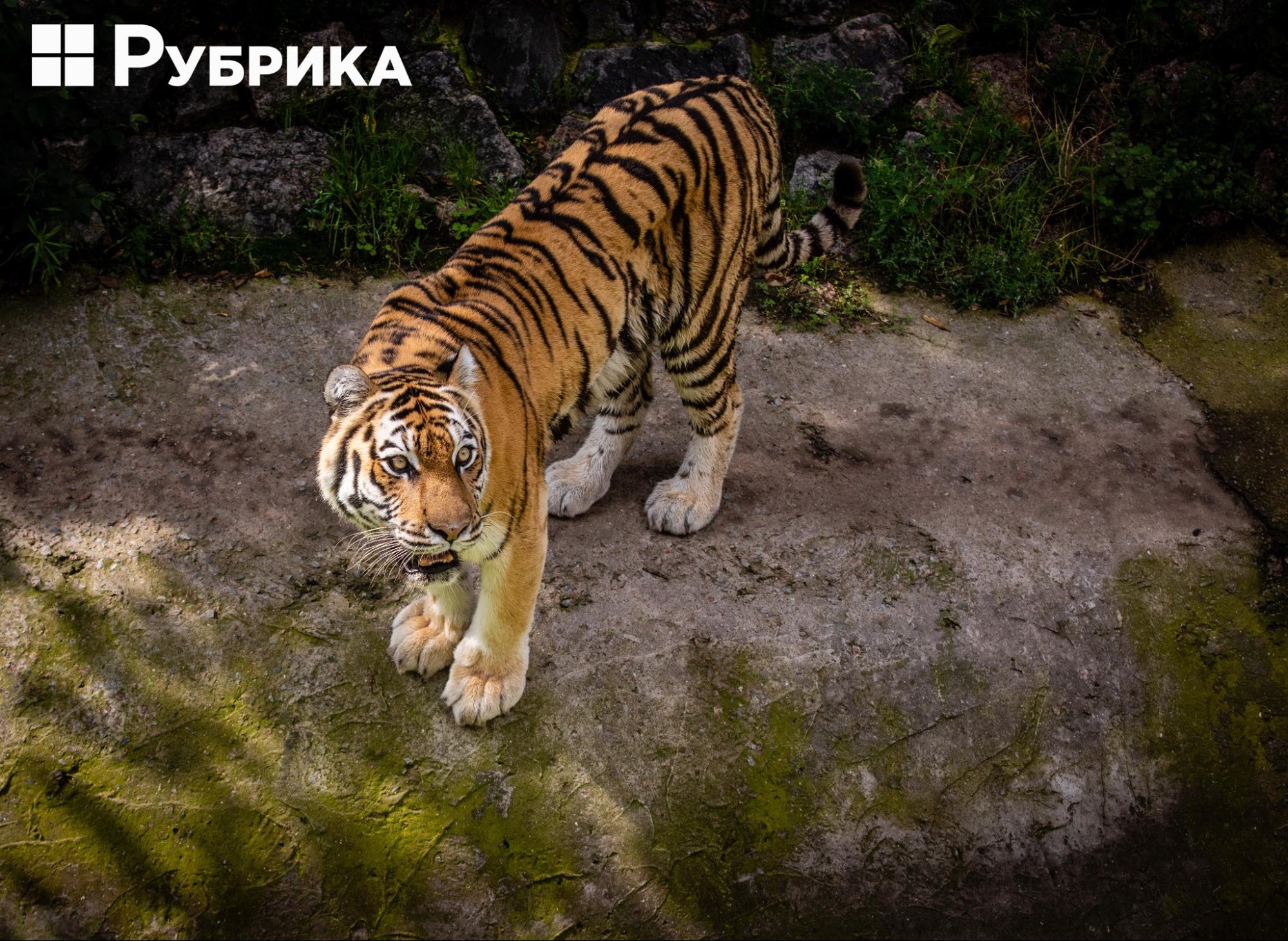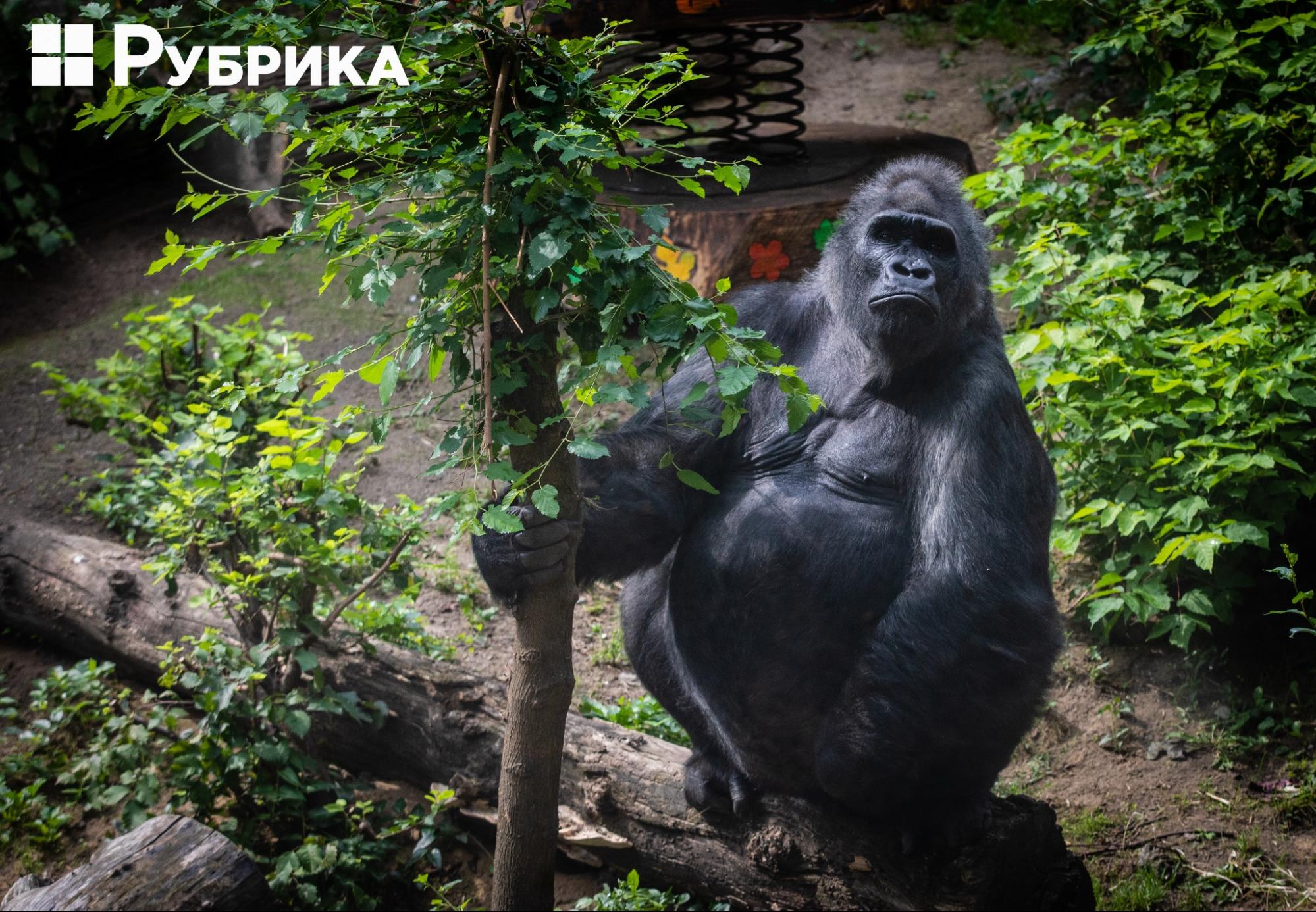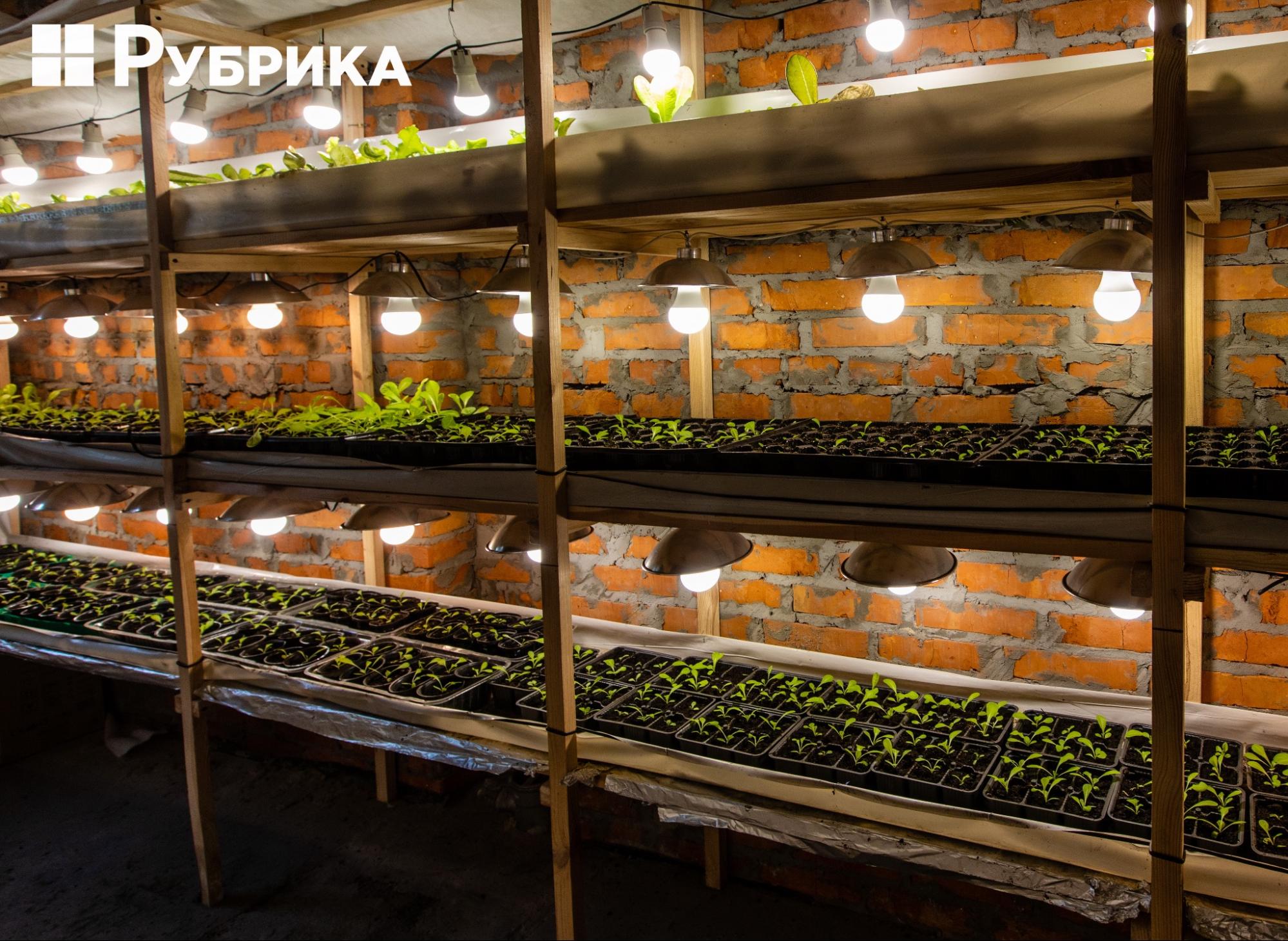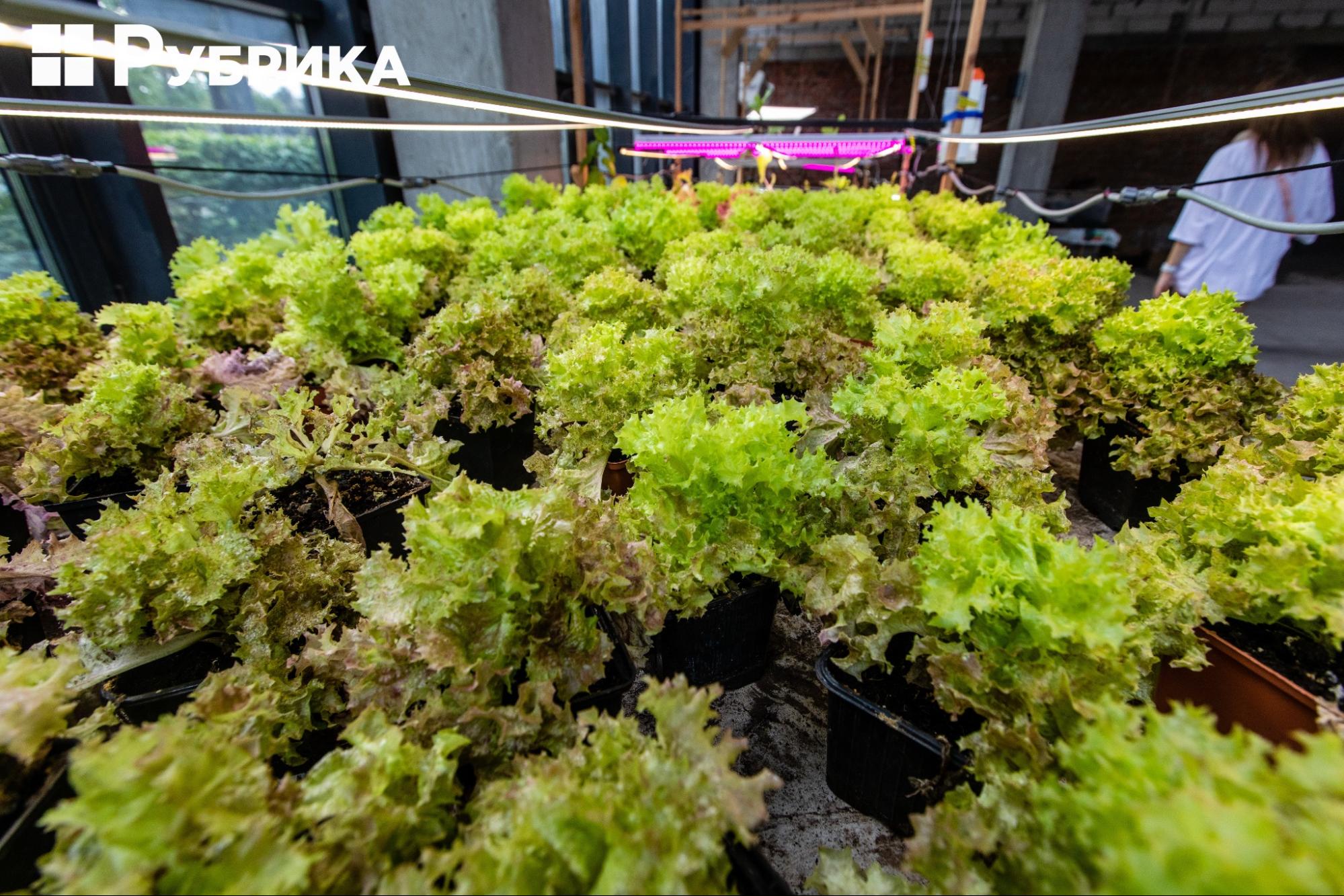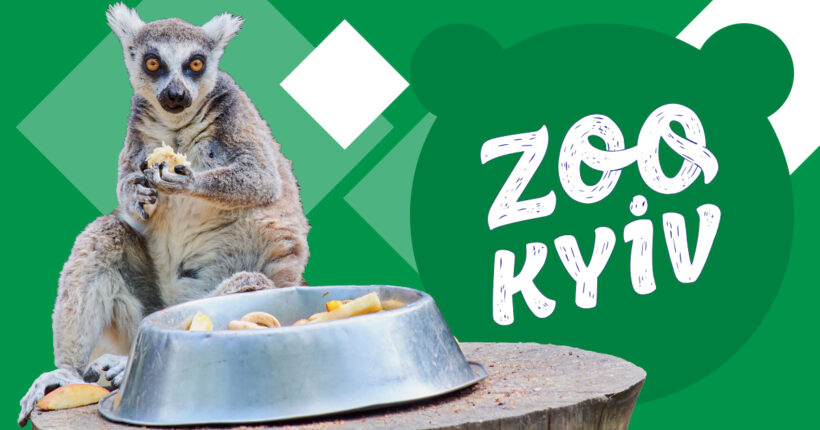
It is probably one of the most enjoyable reporting we have done since the start of a full-scale war. Being on a green island almost in the center of Ukraine's capital and visiting a corner of the African savannah is a luxury. But a few months ago, it wasn't so calm here.
The first days of the war: weapons instead of slippers
"The day the war started, some of our employees were already here very early. These are heads of departments, deputies, electricians, plumbers, and senior keepers—those people we cannot do without," says Kyrylo Trantin, Kyiv Zoo director.
The park managed to navigate and adapt to the new conditions quickly. The first task was to protect the park's territory, employees, and animals.
"I was torn between the zoo, administration, and management. First, we had to dim the zoo and blackout, then build a couple of barricades. After all, on the first day, there was a breakthrough along Dehtiarevska and Zoolohichna [streets], and we understood it was necessary. We are seriously barricaded. Some who had something brought their weapons, and three people guarded the entrances to the shelters."
"We were on duty in shifts, but in the early days, mainly since there were no bomb shelters in the parks, we equipped basements for employees: we brought benches, pallets, mattresses, blankets, and sleeping bags. For the first four nights, we didn't sleep at all."
"You get up at 6 am, climb out of the basement, and go out armed and check all the bushes so that no one climbs in"
The park director asked the city to provide the park with security guards. At first, the authorities didn't understand why the zoo needed territorial defense. When the zoo invited them, they saw what kind of territory it was: next to it was a military base, a strategic object that could be reached from the park. So KyivZOO got a guard of eight territorial defense fighters with machine guns.
"You get up at 6 am, climb out of the basement, and go out armed and check all the bushes so that no one climbs in. Then, however, we installed the wire on the most challenging sections where there could be a breakthrough, and on the 5th day, I asked the city for weapons for employees. They gave us the defense, for which I am very grateful to them. I was able to get some sleep at night."
Time trouble work
Park employees worked 24/7, and each of them did the work for five people:
"On the first day, we had only 40 people. For instance, the department with 18 people had only two left. So they start at 7 am and finish at 5 pm. So it was in the ungulates section: they came in, cleaned, and fed animals. There was no science, no observation; they had no time left. I raked the manure in the elephant enclosure."
The park director recalls that everyone was stressed:
"In the first week, I lost 7 kilograms. On the third day, my phone howled: it counted that I had walked 32 kilometers in a day. All this is on the territory of the zoo," Kyrylo says and laughs.
This is logical: walking around the park from one enclosure to another is far. It's hard to notice this on ordinary days, but while we went around all the enclosures, we were convinced that walking 10 thousand steps daily for a park employee is a trifle.
"You don't eat anything, only dark chocolate to keep your brain working. And it wasn't just me; everyone was like that—sunken eyes and pale faces. But it's okay. We got used to it.
How did the animals react?
There are no bomb shelters in the park. Imagine how big a basement should be where you can hide an elephant? Exactly.
So, the park staff tried to protect the animal enclosures as much as possible. The winter shed for zebras was lined with straw from the inside so that they wouldn't smash their heads against the walls when frightened by a loud sound. They boarded up the windows so the blown glass from the blast wouldn't hit the animals.
During the explosions and shooting, the animals went into shock, and they had to be sedated with drugs:
"Elephant and zebras were on antidepressants. In the first week, we gave it a reasonable dose of sedation, and in the first days, there was always a person near the enclosure. As soon as the observer saw that the elephant was behaving unusually, they began to talk to it and gave it the food he loved, like bananas and apples.
There were enough sedatives for animals. As with provisions, the park stocked up on medical supplies in advance. We also took into account the situations when the inhabitants of the zoo can escape from the enclosures from fright:
"We had a gun loaded with an antidote at all times so that if the animal came out of the enclosure, it could be put down to sleep. The animal catching team was always on standby. We have a protocol by which we must act in such cases."
It's great that the preventive measures taken by the park workers worked, and there were no losses in the park. Just the pelicans crushed the eggs, and the lemur abandoned one of her two sons. But the baby came out and was named Bayraktar.
"He lived with us, jumped over our heads," Kyrylo recalls.
Now Bayraktar has grown up and, together with his brothers, lives in an adult enclosure.
Where did the zoo get food for the animals?
"Two weeks before the (full-scale, – ed.) war, we felt that a storm was coming. We understood there would be a disaster and replenished essential supplies for some positions a month and a half ahead."
Later it turned out that the "fat layer" of the zoo helped it survive.
"What's wrong with a private zoo, and why am I allergic to them? They don't have an airbag. For example, when the war began on February 24. On February 27, our park already paid employees salaries with maximum bonuses. After that, several more people came to us with bags and backpacks and said: 'We are here until the victory.' For a month and a half, people did not leave here."
Everyone united, even the suppliers.
"The supplier brought us 7 tons of food in the first days: apples, vegetables, everything he had in stock. He said he had opened a warehouse for us near Vishneve: 'If you get there, take whatever you want,' he said. In the second week, the meat supplier brought us more than one and a half tons of meat."
Thanks to the reserve fund, it was possible to buy bananas and greens; then, the prices skyrocketed. But later, the park found a solution to this problem.
Chameleons, snakes, dogs, and cats
Now there are about 150 new animals in the zoo. It would be logical to assume that most are evacuees from other zoos, but no. Most are pets.
"So, people came with a box, opened it, and there was a skink. It is an Australian heat-loving lizard. They cannot take him and feed him. So they brought us several boxes with chameleons and snakes. They gave away turtles."
The zoo accepted all animals except dogs and cats, and many wanted to leave them. The park no longer took them; there was nowhere to place them. But they didn't refuse to help zoos. Kyrylo says that when there was fighting in Yasnohorodka, and on the 4th day, the village sanctuary ran out of fuel and firewood, they brought a meter-by-meter box with 11 little monkeys.
"They were hungry and stressed and just ate for the first week."
The Kyiv zoo was preparing to receive four tigers from the Kharkiv zoo. In two days, we built an enclosure, but only one tigress arrived.
"She was a misfortune: wretched, wounded, rotten, covered in blood, and terrible to look at. But it's okay; she has already adapted and taken the enclosure from our tigers."
As soon as we approach the enclosure, we are met by a beautiful, graceful tigress with a glossy coat. It is difficult to imagine that she was in a deplorable state a few months ago. Now the guest is unrecognizable.
What is the solution?
Being Ukrainian means being able to find a way out of even the most difficult situations
The two biggest challenges for the zoo during the hostilities in the Kyiv region are logistics and products. Employees from remote areas couldn't get to the zoo, and stockpiling perishables like bananas and greens for the animals was impossible.
"So on the first day, we started growing our grain, oats, and lettuce for animals. Primates need it and usually eat up to 10 kilograms of salads daily. We have grown before, but not in such volumes. Later, when the first crop grew after March 10, sprouted oats and grain saved them, especially Toni. He loves lettuce very much."
Toni, the only gorilla in Ukraine, recently celebrated his 48th birthday. Anticipating the question of whether he's lonely, park employee Bohdan with sideburns, like the king of rock and roll, says once they tried to settle Toni with a female. But, the relationship between the gorillas was toxic, and the couple always fought.
By the way, Toni is a vegetarian. Even though meat is usually included in the gorillas' diet, in the case of Toni, it had to be abandoned. It was not his choice.
"Last year, he had two weeks of constipation, so we had to invite specialists from Germany to clean his intestines. After that, they changed the diet: they removed yogurt, and boiled chicken, which he loved so much. Now he eats bananas and green salads."
After a shortage of greenery and a price jump, the zoo equipped greenhouses in a room frozen at the construction stage. As part of the zoo renovation, new modern food courts were to appear on the side of Zoolohichna Street. But now there are greenhouses. Even in complete isolation, primates will not be left without salads, which they love.
What else does a zoo need to survive?
- The zoo needs bomb shelters. Even now, when the air raid begins, visitors must leave the zoo because there are no shelters.
"New buildings need to be built with this in mind: people need to have a place to wait out the shelling. We should also build new enclosures considering the possibility of hiding animals," the park director believes.
- The zoo needs to consolidate the status of critical infrastructure objects for zoos. Now they are not considered as such.
"It is a political omission. I cannot close or evacuate the entire zoo, disband all the animals, or shoot them. Zoos should be provided and protected, just like hospitals," Kyrylo explains.
- Private zoos should have an airbag.
"It's good that Europe is now supporting us. We, having stocks of feed, distributed them to other pets. All zoos should have strategic reserves," says the director.

Breaking out of occupation and telling the truth about russians: five stories of Ukrainians

Homeless Animals Day: How Hostomel shelter survived during russian occupation

Stork's home: what's happening to Kyiv region's Demydiv flooded to stop enemies
Photo by Mykola Tymchenko, Rubryka


